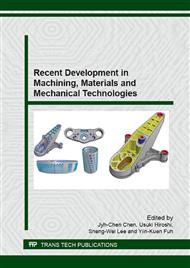p.119
p.124
p.129
p.136
p.142
p.151
p.158
p.164
p.168
Viscosity Effects of Spray Characteristics in Air-Blast Atomizer
Abstract:
Coal is currently the most widely used and most abundant fossil fuel in the world. It is primarily used for generating electricity at power plants. However, due to problems of pollution and energy consumption, importance has been placed on the development of clean coal technology. Coal-water slurry (CWS), consisting of fine coal and water mixture, is a liquid fuel used to replace heavy fuel oil for boilers and entrained flow gasifiers. Since CWS is a liquid with high viscosity and regular atomizing burners are designed for the use of fossil fuels with low viscosity, it is necessary to design high efficiency atomizing burners specific for CWS. As viscosity is a key factor for atomization characteristics, we used silicon oils of different viscosity as the testing liquids, to study the effect of different atomization parameters on the atomization characteristics. Our results show that, when the gas to liquid ratio (GLR) is high, the existing particle velocity at the central axis is lower than low GLR condition; likewise, the velocity at radial positions is higher of the high-viscosity case. The velocity also increases as the radial distance further increases away from the axis. And decrease as the GLR increases. On the other hand, the distribution of the velocities does not change after the radial distance reaches a certain limit. This limit decreases as the axial length increases. Increasing viscosity increases the inertial force of the liquid fluid, so the momentum of the atomization gas needs to be increased for it to generate enough shear stress on the fluid and to enhance the atomization characteristics.
Info:
Periodical:
Pages:
142-147
Citation:
Online since:
July 2015
Authors:
Keywords:
Price:
Сopyright:
© 2015 Trans Tech Publications Ltd. All Rights Reserved
Share:
Citation:


